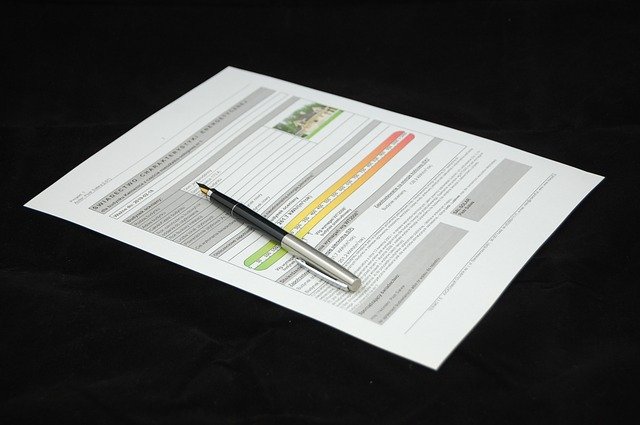“508 compliance” is a phrase often heard in government agencies. “504 compliance” is often heard in educational settings. What do these mean? How does your agency or organization achieve compliance?
What is the Rehabilitation Act?
Signed into law in 1973, the Rehabilitation Act prohibits discrimination on the basis of disability. It applies specifically to programs run by federal agencies. It also applies to organizations that receive federal funding, as well as to employment by the federal government and federal contractors.
Section 502 of the Rehabilitation Act established the US Access Board. The Access Board develops regulations under the Rehabilitation Act and enforces compliance with those regulations. The heads of the federal Cabinet, along with the heads of the US Postal Service and General Services Administrations, or their designees, make up the Access Board. Additionally, the President must appoint to the Access Board an additional 13 members of the general public. The majority of those appointees should have a disability. The Access Board also fosters accessible design by providing accessibility training and technical assistance.
What is Section 504 of the Rehabilitation Act?

Section 504 grants civil rights for people who have disabilities. According to Section 504, “No otherwise qualified individual with a disability in the United States […] shall, solely by reason of her or his disability, be excluded from the participation in, be denied the benefits of, or be subjected to discrimination under any program or activity receiving Federal financial assistance or any program or activity conducted by any Executive agency or by the United States Postal Service.”
Programs and organizations that receive federal funding include public libraries, public transportation such as airports, federal housing, public hospitals and healthcare facilities, and all levels of public and private education that receive federal funding.
The establishment of Section 504 led to the creation of the Americans with Disabilities Act in 1990.
What is Section 508 of the Rehabilitation Act?
Section 508 of the Rehabilitation Acis an amendment to the Rehabilitation Act that refers specifically to electronic and information technology (EIT). Therefore, it covers digital accessibility. It is in essence an extension of Section 504. It states that all federal agencies must make their EIT accessible to people with disabilities. These regulations apply to federal websites.
Refreshed in 2018, this law required the US Access Board to develop standards for Information and Communication Technology (ICT) that regulate how the federal government procures equipment and technology.
What do Section 508 regulations require?
It requires all federal agencies to:
- Ensure all EIT is accessible for people with disabilities. This includes websites and the files they contain.
- Make necessary accommodations to allow an employee with a disability to perform their job
- Make accommodations that allow applicants with a disability to apply for a job
- Ensure that all employees have access to equal benefits and privileges
- Provide necessary software to employees to access information
How are Section 504 and Section 508 enforced?
All federal agencies must comply with Section 504 and Section 508 regulations. Additionally, any applicable organization that does business with the federal government or receives federal funding must comply with Section 504 regulations.
Any person with a disability can file a complaint about an agency’s lack of compliance with these regulations. Direct complaints about section 504 typically to the Office for Civil rights in the department under which the agency or organization falls. Direct complaints about Section 508 to the US General Services Administration (GSA).
When an agency receives a complaint that its EIT (including websites) does not comply with Section 504, that agency should resolve the accessibility issue. If the issue remains unresolved, a lawsuit can arise from a Section 504 complaint. Such a lawsuit can result in damages being awarded, as well as costly court and attorney’s fees and a knock on the reputation of the educational institution. If a complaint applying to Section 508 is found to be supported, the agency will have to provide the complainant with attorney’s fees and injunctive relief – which is usually to resolve the issue. A civil action can also be filed which may result in equitable relief and/or compensatory damages.
Your agency should resolve these issues quickly to avoid negative publicity and costly fees.

How does Section 508 compliance relate to PDF Accessibility?
EIT includes more than just your web pages; it includes everything located on your websites, such as PDF files. PDFs are the most commonly used document format for websites and electronic information. Unfortunately, they can also be one of the least accessible document formats. When considering accessibility for your electronic and information technology (EIT), it’s important to include your PDF documents.
What kinds of documents might be in PDF form?
Here’s a list of the types of documents that your agency or organization might store on its website or in its internal digital files in PDF format:
- Employee directories
- Human resources manuals
- Benefits manuals and information
- User manuals
- Financial reports
- Monthly and annual budgets
- Meeting minutes
- Departmental reports
- Brochures
- Course descriptions
- Textbook lists
- Syllabi
- Regulations
- Legislation
- Monthly statements
How to achieve 504 and 508 compliance for PDF accessibility
All PDFs produced by your agency or organization must be made accessible for Section 504 and 508 compliance. This will require PDF remediation and then validation to ensure that it’s been done correctly. Ideally, there will be a culture change within your organization to introduce accessibility culture. This leads to accountability in every department for making sure your digital information, including your PDF documents, is compliant.
For more information about PDF remediation and compliance, check out these articles:
Ready to make your PDFs accessible? Contact us for a free consultation about your document compliance needs.




